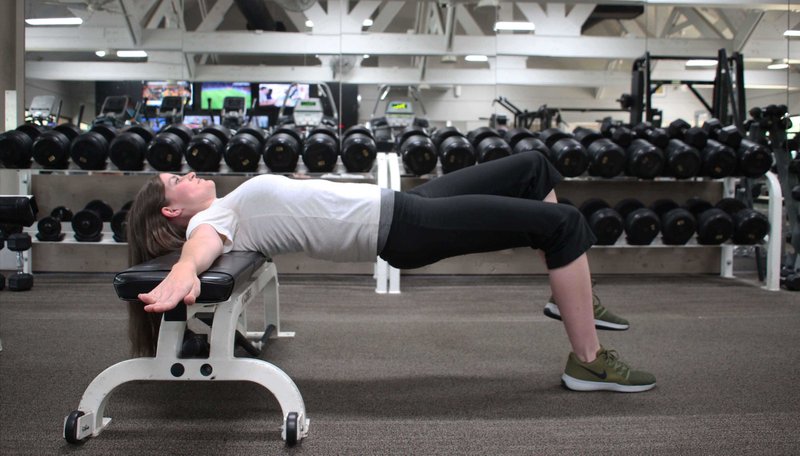As an exercise physiology nerd, I often find myself thinking about movement classifications, safety and other factors that aren't necessarily top of mind for most people. This is especially true when I've witnessed an injury, because I want to understand how the incident could have been prevented.
I often consider what I know about the concept of kinetic chains and how applying that knowledge could reduce injury risk.
Any movement can be classified into one of two categories:
■ Closed kinetic chain exercise
■ Open kinetic chain exercise.
A kinetic chain is a lineup of body parts that affect one another during movements. When one part moves, it creates a chain of events. Those events affect how neighboring parts move.
An open kinetic chain includes a distal segment — usually a hand or a foot — that is freely movable in space. A seated leg extension, for example, allows the foot to move freely because it isn't stuck to some fixed terminal point, such as a floor or a wall. Thus the knee joint is under low stress and can operate with relative ease.
A closed kinetic chain exercise, on the other hand, features a distal segment that is fixed to a terminal point. A leg press, squat or static lunge are examples of lower body exercises classified as closed kinetic chain movements. This is because the foot is fixed, on the floor or on a machine. Since the foot can't move, the knee and/or hip joint operate within a much more restrictive environment.
In general, open kinetic chain exercises present a lower risk for injury simply because the involved joints can move with less restriction. Squats present more injury risk than leg extensions for this very reason.
It's not that closed kinetic chain exercises are "bad" or should be avoided: One must simply use caution when performing these types of movements.
In athletics, many of the most traumatic noncontact injuries occur during closed kinetic chain movement. Think about tennis players running for a ball. As they reach the ball, they plant their lead foot to stop their forward momentum. This forces the leg muscles to engage with the knee absorbing significant momentum pressure as the foot remains in place.
Active adults can decide whether to include open or kinetic chain exercises in their training programs. For example, choosing a leg extension versus a squat would be a good decision for someone looking to avoid pressure on the knees. When closed chain exercises are used, the idea is to perform them slowly and with absolute adherence to proper form.
This week's exercise is a closed chain movement, but it's performed in a slow and controlled manner that allows the exerciser to manage the pressure absorbed. The Single Leg Hip Thrust is appropriate for exercisers of all levels and can be modified to be more or less difficult quite easily.
1. Position your shoulders on an exercise bench sideways, so that your feet and hips extend from the side of the bench while the shoulders are supported.
2. Move your elbows straight out from the shoulders so they form a "T" of support on the bench with your upper back and arms.
3. Allow your hips to drop almost to the floor by bending the knees and hips.
4. Press the hips up using only the right foot.
5. The left foot will hover a few inches off the floor. Maintaining that hover, press the hips up until they are parallel with the floor, pause, then lower them back down.
5. Repeat for 12 repetitions, then switch sides and perform another 12, doing two sets on each side.
The Single Leg Hip Thrust can be modified to be a bit less challenge from a balance perspective by simply keeping two feet on the floor. This displaces the resistance to both hips rather than one. After one is comfortable with the bilateral version, add the single leg thrust. Enjoy!
Matt Parrott has a doctorate in education (sport studies) and a master's in kinesiology and is certified by the American College of Sports Medicine.
vballtop@aol.com
Style on 07/29/2019
